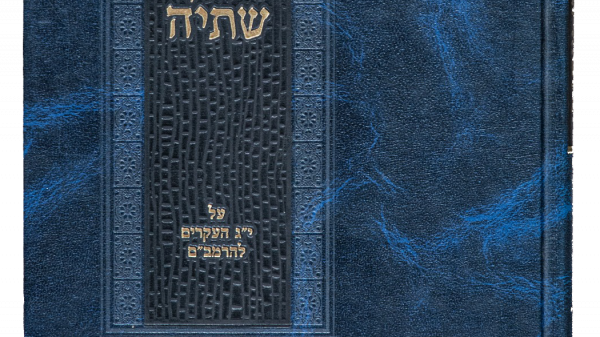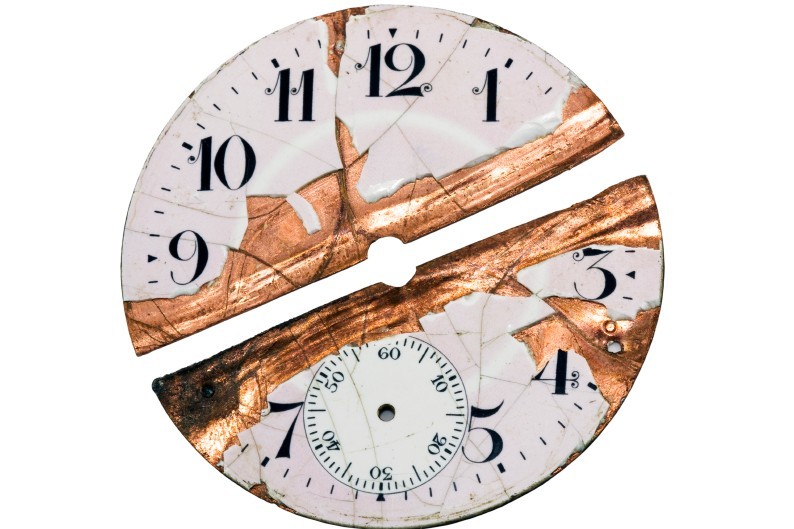Click here to download PDF
Vaeschanan & Nachamu
As we mentioned last week, Parshas Vaeschanan is always “Shabbos Nachamu”. The Rambam in the laws of tefillah specifically states that our custom is to align the “parshas hashavua” so that Vaeschanan comes out after Tisha b’Av, therefore there must be a connection between the two. what is it?
What’s with “Kefel”
Regarding the haftorah of “Nachamu” the Yalkut Shimoni (Yeshayahu 445) brings a Chazal that points out that it’s says “Nachamu” twice: “Nachamu Ami” – be consoled be consoled my nation. Chazal explain: “It is parallel to that the Jewish people sinned “Kiflayim”-double (see Eicha 1:8) and they were punished by Hashem “Kiflayim”-double for their sins (Yeshayahu 40:2 -this week’s haftarah) and therefore they are consoled “Kiflayim”-double as it says “Nachamu Ami”( Yeshayahu 40:1)”. When we think about this analytically it is hard to understand. The term “Kefel” which is commonly translated as “double” seemingly doesn’t apply here. Chazal use that term to describe how a victim of theft is compensated by the thief in that he doesn’t just get the original object back, but he also gets its equivalent value in addition. In that context to translate “Kefel” as double make sense: he got something additional (‘doubles’) that he did not earn, and the full quantity awarded is measured by the value stolen times 2. That can be called “double”. However, where the term “Kefel” is being applied in the Pesukim and in the Yalkut Shimoni none of this applies! What does it mean to “sin double”? You sin as much as you sinned! What does it mean to be “punished double” from Hashem? Hashem is just and only punishes us as we deserve ‘measure for measure’! What does it mean to be “consoled double”? You are either consoled or not! Clearly “Kefel” is not to be simply translated as “double”. It means something bigger and deeper….
The two versions of Aseres HaDibros
In this week’s Parsha Moshe recaps the “Aseres HaDibros” that Hashem said at Sinai. There are differences between the text as it is in parshas Yisro and as it is this week’s Parsha. Chazal (Shavuos 20b) that both versions were said simultaneously “something that no human mouth could say, and no human ears can hear”. What was the purpose in that? Why couldn’t the differing elements be merged and incorporated in a unified text? What was the purpose of saying two different sets of utterances simultaneously which “no ear can hear”?
The Two sets of Luchos
The Gemara (Bava Kama 54b – 55a) points out some of the differences between the text of this week’s Parsha and that of parsha Yisro. One of them is in the Mitzvah of honoring one’s parents as it is in this week’s Parsha (5:15) it says, “so that you will have long days and so that it will be good for you”. “So that it will be good for you” is not mentioned in the version of that commandment in parshas Yisro! The Gemara explains it is because Hashem knew that the First Tablets would be broken and it would be a bad sign as if to say that “the goodness of the Jewish people has ceased” so therefore it was only said in this week’s Parsha – alluding to the fact that it is written in the Second Tablets that did not break and it is not written in the first tablets which did break! This means that the version written in parshas Yisro is what got engraved on the Tablets that broke and the version written in this week’s Parsha is what got engraved on the Tablets that did not break. They were said simultaneously but when it comes to writing they breaks up! Why? [This is also alluded to in the Shabbos shacharis prayer. We mention the splendor Moshe got at Sinai – which is when he came down with the Second Tablets and we mention the Tablets he brought down – obviously referring to the tablets that did not break – “and it’s written them to observe (“Shemiras”) Shabbos which is in accordance with the version of the Commandment to observe Shabbos as written in this week’s Parsha!]
“Kefel” – Additional set
The term “Kefel” means more than simply “times 2”. In the Haggadah on Seder night when we talk about the 15 good things Hashem did for us in the “Dayeinu”. We sum it up: ”it was a good which is “Kefel” and then again “Kefel”. The math does not work out if its 1 * 2 * 2 as we talked about 15 levels of goodness! The Maharal explains that “Kefel” means another set! In the “Dayeinu” there are three sets of goodness: there’s what Hashem did to liberate us, there’s what Hashem did to us sustain us in the desert, and then there’s what Hashem did to give us High spiritual levels. These three sets are called “good, “Kefel” and again “Kefel”. The Machpela (root is “Kefel”) cave was according to some opinions a base and a second-story. According to other opinions it was a chamber and a further inner chamber. The point being that there was a “set” as in the base, and an additional “set” which was the on top. A “set” that was the external and another “set” which was internal. The victim of theft is awarded “another set” like the one stolen.
One & Two
“One spoke Hashem two I heard” (Tehillim62:12) this Pasuk refers to the Aseres HaDibros at Sinai – it was two different sets of utterances, but they were said simultaneously. We need to analyze both the “Oneness” of why they were uttered simultaneously and the “Twoness” which is expressed that they are spelled out separately on the First Luchos and Second Luchos respectively. It is interesting to note that “Twoness” is inherently linked to the Luchos. We say on the Seder night: “who knows two? I know two! Two are the Luchos!”. This is not just that there is a right side and a left side but it’s also the “Twoness” of that there was the set that broke and the set that endured which reflects the “Twoness” of the text of the Aseres HaDibros which was said simultaneously.
One Plan – Multiple Dimensions
The Luchos and the Dibros engraved on them represent the great phenomenon that Hashem who is One created a super complex diverse reality which starts from Two and onwards. The “Twoness” is not a contradiction to the “Oneness”- it is complex integrated master plan all coming from the same source. Just like Hashem is one so also his Torah is one. The one Torah has in it multiple programming for multiple scenarios – scenarios that in physical reality are mutually exclusive. These multiple programs were created for our benefit so that if we fall out from one set of rules we have another set of rules to fall into. There is the programming for a good world to become a perfect world where the Good and Evil are totally separate and do not mix and the good is at the center. The good just has to become better and by virtue of that the evil will simply disappear because there is no longer be any space for it. That was the world represented by the First Tablets which did not endure. Not only was the writing Divine but even the Tablets that carried the writing were also Divine. That represented a pure world in perfect sync with the Torah. In such a world the evil was marginalized. That world would have grown into absolute perfection and evil would have no room to exist. The text of the Aseres HaDibros in Yisro is the program for that world. We weren’t worthy, and we succumbed and made a world where the body and physical reality are imperfect and adulterated with evil – but there’s programming for that event also! To have the Tablets of earthly Stone representing our “Heart of Stone” but to be engraved with the words of Hashem! Our world is a constant battle to liberate the good from the evil – it’s a world of Confusion and struggle. It’s a different set of circumstances that plays by a different set of rules. That’s what the second Tablets represented and text of the Aseres HaDibros in this week’s Parsha represent. “Both were said with one utterance” – to teach us it’s “all one”! All programs, all sets of rules, are equally from Hashem! However, they cannot be one integrated text because they’re two different sets of rules for two different sets of circumstances.
Sinning “Kefel”
Understanding that we have a multi-dimensional reality will enable us to understand what it means that “we sinned Kefel”. The idea is that when committing a sin there’s multiple aspects to it. There’s the actual offense itself that you broke Hashem’s law, and then there is the damage that that sin caused. Two people could be guilty of the same sin but the Cosmic damage that they wreaked may not be the same. if it one person was more knowledgeable, had a higher soul, and did it out of spite and not out of Temptation, the Cosmic damage that he causes is much greater than a person who did it on purpose but was not well educated as to understanding the severity of the crime, may have had a lower soul, and did it out of pure temptation and not out of spite. Both broke the same “rule on the books” but they are not equal in the cosmic damage that they caused. The “Kefel” aspect of the sin means that asides from “breaking the law” they caused a tremendous amount of cosmic damage. The Nefesh HaChaim (Shaar Alef) explains that the Beis Hamikdash on Earth only got destroyed after we wreaked havoc on its Heavenly equivalent with our evil Deeds. The “Kefel” is that there were two different dimensions to the sin: the violation of the law on earth visible to all and the destruction wrought in the inner chambers of reality that only a prophet can see.
Punished “Kefel”
They were “punished Kefel” means that the punishment that was meted out on the Jewish people had to accomplish two different things: they had to be punished for breaking the law, but they also had to have the cosmic damage that they caused be burnt out of existence! The Nefesh HaChaim explains that the mechanics of how the cosmic damage is expunged is that it burns itself out of reality by becoming the pain inflicted on the perpetrator. The punishment is doing two different things at the same time: it is his punishment for breaking the law but it’s also his atonement that washes away the contamination he did to himself and removes the contamination from the cosmos! That’s what it means that they got “Punished Kefel” – it was very severe because of the multiple dimensions it was operating on.
“Consoled Kefel”
To be to get consoled “Kefel” means that it is multi-dimensional! It’s not just that from this point on words you will no longer be suffering because that still leaves you a history of suffering. The real consolation is that the past suffering also be converted into goodness! It is to be reframed as a additional dimension of the goodness, otherwise how could someone ever be fully consoled if he has a troubled past? This is not just a problem for the individual, perhaps the individual can forget his past sufferings, this is a major theological problem! Hashem is the one and only Creator and created the world with the agenda of bestowing goodness. Anything “bad” is thwarting the Divine plan and would be a serious question as to Hashem’s omnipotence. The midrash Rabbah at the end of the Genesis when it says “Hashem saw all that He created and behold it was very good” explains: “Good” are all the good things, “very good” are all the bad things – because they are destined to be converted and be an additional Dimension to goodness! This demonstrates how the one real power, who identifies as good, and only wants to bestow good, indeed only created goodness! Everything that we called “bad” is not “anti- goodness” – it’s a additional dimension to be added onto goodness – perfectly parallel to the idea of the two sets of the Aseres HaDibros – two different sets for two different dimensions but all coming from the same Divine master plan! That is the “Kefel consolation” – that there is no suffering from here on in and also looking back we could see how the bad times were really all for the good!
Rebbe Akiva
With this we could understand the famous story at the end of maseches Makos: Rebbe Akiva was walking with other sages and they heard the Romans partying. The sages started crying and Rebbe Akiva started laughing. They asked him why he’s laughing, and he said because if those who violate Hashem’s Will have it so good how much more those who uphold Hashem’s Will. No response from the sages is recorded. There was another instance where they saw a fox coming out of where the ‘holiest of holies’ once stood and again they cried and Rebbe Akiva laughed. They asked him why he’s laughing, and he said: that Prophecies of the ‘bad times’ are inextricably bound up with the Prophecies for the good times. Until the prophecies for the ‘bad’ fulfilled we will not see the prophecies for the good. Now that we see the negative prophecies fulfilled – the good times are coming! The Talmud stresses: “They told him as follows: “Akiva you consoled us (“Nichamtanu” – like “Nachamu”) Akiva you consoled us”. They said it twice and in the first instance they said nothing, why? In the first instance Rebbe Akiva just explained to them that in the future they will have it good: if bad people have a good how much more so good people could expect to have it good. But that’s for the future and that’s not an adequate consolation because it leaves a ‘stain on history’ with all the bad times that there were! But in the second instance Rebbe Akiva explain to them that the bad times are necessary to facilitate the good times and with that the bad times are reframed as being an additional dimension on to the good times! That’s when they were consoled, and they duly said Akiva you “consoled us Kefel” because you explained the “double consolation” of good from here on in and reframing the bad times as additional dimensions of goodness
Good Shabbos










